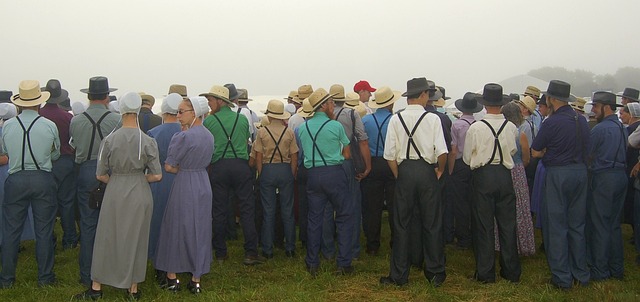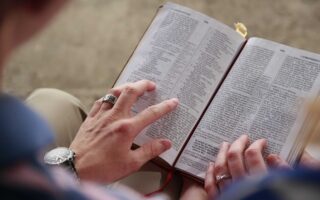The Amish are a religious group known for their simple and traditional way of life. They adhere to a set of principles and beliefs that guide their daily activities. One aspect of their lifestyle that often raises questions is their use of electricity. In this article, we will explore whether or not the Amish can use electricity according to their religious beliefs and practices.
Table of Contents
The History of Amish and Electricity
The Amish community is known for its simple and traditional way of life. They have chosen to live without many modern conveniences, including electricity. But have they always lived this way? Let’s take a look at the history of the Amish and electricity.
The Amish are a religious group that originated in Europe in the 17th century. They are known for their strong commitment to living a life of simplicity and separation from the modern world. This commitment extends to their use of technology, including electricity.
In the early days of the Amish community, electricity was not yet a part of everyday life. The first electric power plant was built in the late 19th century, long after the Amish had established their way of life. As a result, the Amish did not have to make a conscious decision about whether or not to use electricity.
However, as electricity became more widespread in the early 20th century, the Amish were faced with a choice. Many communities decided to embrace this new technology, seeing it as a way to improve their quality of life. But the majority of the Amish chose to reject electricity, believing that it would lead to a loss of their traditional values and a weakening of their community.
For the Amish, the decision to reject electricity was not just about the technology itself. It was also about the values and way of life that they held dear. The Amish believe in living a simple and humble life, free from the distractions and temptations of the modern world. They see electricity as a symbol of materialism and excess, and they fear that its use would lead them away from their core beliefs.
Instead of relying on electricity, the Amish use alternative sources of power. They often use gas-powered generators to run their machinery and tools. They also use kerosene lamps for lighting and wood-burning stoves for cooking and heating. These alternative sources of power allow the Amish to maintain their traditional way of life while still meeting their basic needs.
The decision to reject electricity has not always been easy for the Amish. In a world that is increasingly dependent on technology, they have faced challenges and criticism for their choice. But the Amish remain steadfast in their commitment to their beliefs and their way of life.
In recent years, there have been some exceptions to the Amish’s rejection of electricity. Some Amish communities have allowed the use of electricity for certain purposes, such as running refrigerators or charging batteries. These exceptions are made on a case-by-case basis and are carefully considered by the community’s leaders.
Overall, the history of the Amish and electricity is a testament to their commitment to their values and way of life. While the rest of the world has embraced electricity as an essential part of modern life, the Amish have chosen to live without it. Their rejection of electricity is not just about the technology itself, but about the values and beliefs that they hold dear. And in a world that is constantly changing, the Amish remain steadfast in their commitment to their traditional way of life.
Understanding the Amish Perspective on Electricity

Can Amish Use Electricity?
Understanding the Amish Perspective on Electricity
When it comes to the Amish community, there are many misconceptions and misunderstandings about their way of life. One of the most common questions people have is whether or not the Amish can use electricity. The answer to this question is not as straightforward as one might think. To truly understand the Amish perspective on electricity, we need to delve into their beliefs and values.
The Amish are a religious group that originated in Europe in the 17th century. They believe in living a simple and humble life, separate from the modern world. This belief stems from their interpretation of the Bible, which emphasizes the importance of humility, community, and separation from worldly temptations. For the Amish, electricity is seen as a symbol of the modern world and all its distractions.
In the Amish community, the use of electricity is not completely forbidden, but it is highly regulated. Each Amish district has its own set of rules and guidelines regarding the use of electricity. These rules are determined by the community leaders, known as bishops, who interpret the Bible and make decisions based on the principles of their faith.
Generally, the Amish do not have electricity in their homes. They believe that the use of electricity would lead to a dependence on the outside world and a loss of self-sufficiency. Instead, they rely on alternative sources of power, such as gas, propane, and kerosene. These sources allow them to meet their basic needs without compromising their values.
However, it is important to note that the Amish do make exceptions when it comes to electricity. In some cases, they may use electricity for specific purposes, such as running machinery on their farms or in their businesses. These exceptions are made on a case-by-case basis and are subject to the approval of the community leaders.
The Amish also have a unique approach to technology. While they may not use electricity in their homes, they do recognize the benefits of certain technologies in their businesses and communities. For example, many Amish businesses use diesel generators to power their machinery, allowing them to remain competitive in the modern marketplace. They also make use of telephones, but only in designated locations outside of their homes.
The Amish perspective on electricity is deeply rooted in their religious beliefs and values. They see electricity as a potential threat to their way of life, and they strive to maintain their traditions and customs. By living without electricity in their homes, the Amish are able to focus on what they believe truly matters – their faith, their families, and their community.
In conclusion, the Amish approach to electricity is complex and nuanced. While they do not completely reject the use of electricity, they have strict guidelines and regulations in place to ensure that it aligns with their values. By understanding their perspective, we can gain a deeper appreciation for their way of life and the choices they make to preserve their traditions.
Practical Alternatives to Electricity for the Amish Community
Can Amish Use Electricity?
The Amish community is known for its commitment to a simple and traditional way of life. They have chosen to live without many modern conveniences, including electricity. But have you ever wondered how they manage to get by without this essential resource? In this article, we will explore some practical alternatives to electricity that the Amish community relies on.
One of the most common alternatives to electricity used by the Amish is gas-powered appliances. While they may not have electric stoves or refrigerators, they do have gas-powered ones. These appliances allow them to cook their meals and keep their food fresh without the need for electricity. Gas-powered lamps are also used for lighting in their homes, providing a warm and cozy atmosphere.
Another alternative to electricity that the Amish community embraces is solar power. They have found ways to harness the energy of the sun to meet their needs. Solar panels are installed on their roofs, allowing them to generate electricity for specific purposes. While they may not use solar power for all their needs, it is a practical and sustainable solution for certain tasks.
Water power is yet another alternative that the Amish community utilizes. They have been able to harness the power of flowing water to generate electricity. Water wheels are used to convert the energy of moving water into mechanical power, which can then be used for various purposes. This method allows them to have some electricity without relying on the grid.
In addition to these alternatives, the Amish community also relies on manual labor for many tasks. They believe in hard work and self-sufficiency, so they are not afraid to put in the effort to get things done. For example, instead of using electric washing machines, they use hand-cranked ones. This not only saves them from relying on electricity but also keeps them physically active and connected to their work.
The Amish community’s commitment to a simple lifestyle extends beyond their use of electricity alternatives. They also prioritize sustainable practices and conservation. For instance, they are known for their organic farming methods, which do not rely on chemical fertilizers or pesticides. They also practice water conservation by using rainwater collection systems and limiting their water usage.
Living without electricity may seem challenging to many of us who are accustomed to its convenience. However, the Amish community has found practical alternatives that allow them to live fulfilling lives without it. Their resourcefulness and commitment to their values are truly inspiring.
In conclusion, the Amish community has found practical alternatives to electricity that align with their simple and traditional way of life. Gas-powered appliances, solar power, water power, and manual labor are some of the methods they rely on. These alternatives not only meet their needs but also promote sustainability and self-sufficiency. The Amish community’s commitment to their values and resourcefulness is truly remarkable. So, the next time you wonder if the Amish can use electricity, remember that they have found their own unique and practical ways to live without it.
Exploring the Impact of Technology on Amish Life
Can Amish Use Electricity?
When we think of the Amish, we often picture a community that is completely cut off from the modern world. We imagine them living without electricity, relying solely on traditional methods for their daily tasks. But is this really the case? Can Amish use electricity?
The answer is not as straightforward as you might think. While it is true that the Amish generally avoid using electricity in their homes, there are some exceptions to this rule. In fact, the use of electricity among the Amish varies from community to community and even from family to family.
One of the main reasons why the Amish choose to limit their use of electricity is their desire to live a simple and humble life. They believe that excessive reliance on technology can lead to a loss of community and a weakening of their faith. By avoiding electricity, they are able to maintain a strong sense of community and keep their focus on what truly matters to them.
However, this does not mean that the Amish completely shun electricity. In many Amish communities, you will find that they have designated areas where electricity is allowed. These areas, known as “electricity sheds,” are typically located on the outskirts of the community and are used for specific purposes such as charging batteries or running machinery.
In addition to electricity sheds, some Amish families also use generators to power certain appliances or tools. These generators are typically powered by propane or natural gas, which are considered more acceptable sources of energy within the Amish community. This allows them to have some of the conveniences of modern life while still adhering to their beliefs.
It is important to note that the use of electricity among the Amish is not a black and white issue. Each community and family has its own set of rules and guidelines when it comes to technology. Some Amish families may choose to use electricity for certain tasks, while others may choose to live completely without it.
The decision to use or not use electricity is not taken lightly within the Amish community. It is a decision that is made collectively and is based on the principles and values that they hold dear. The Amish believe in living a life that is in harmony with nature and the world around them. They strive to be self-sufficient and to rely on their own skills and abilities rather than on technology.
In conclusion, while the Amish generally avoid using electricity in their homes, there are exceptions to this rule. The use of electricity among the Amish varies from community to community and even from family to family. They have designated areas where electricity is allowed, and some families use generators powered by propane or natural gas. The decision to use or not use electricity is not taken lightly and is based on the principles and values that the Amish hold dear. Ultimately, the Amish strive to live a simple and humble life, in harmony with nature and their community.
Conclusion
In conclusion, the use of electricity among the Amish community varies. While some Amish groups strictly adhere to traditional practices and abstain from using electricity, others have adopted certain forms of technology that are deemed necessary for their livelihoods and safety. Ultimately, the decision to use electricity is a personal choice made by individual Amish families and communities, guided by their interpretation of religious beliefs and commitment to maintaining a simple and self-sufficient lifestyle.
For licensing reasons, we must provide the following notice: This content was created in part with the help of an AI.


